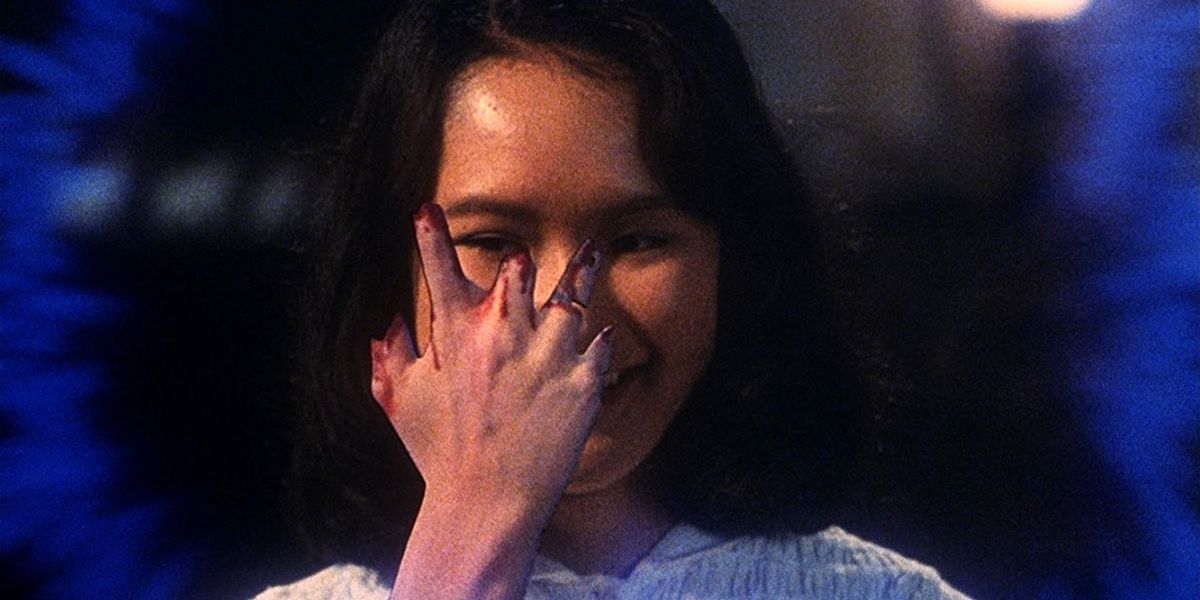April 10 was a sad day for world cinema as it saw the passing of Japanese filmmaker Nobuhiko Obayashi. A man with a long and varied career, Obayashi is best remembered for his 1977 film House. A technical marvel for over 40 years, as well as one of the most mad-cap haunted house movies ever made, House is one of Japan’s most entertaining cult films, and still the weirdest horror film the country has ever produced.
The film’s setup is fairly familiar. It focuses on a teenage girl named Gorgeous who decides to spend her summer at her aunt’s house. Bringing along six of her friends that are all conveniently named for their character traits (Prof, Kung Fu, Fantasy, Mac, Sweet and Melody), they arrive at her aunt’s large abode in the country. It doesn’t take long though before the girls start to uncover supernatural occurrences, unearthing the house's ghostly secrets.
As simplistic as this story may seem, it’s the presentation and the unhinged screenplay that give the film its singular qualities. Shot in a campy low-budget style, the film holds a similar appeal to Sam Raimi’s Evil Dead films. That said, House’s humorous approach to horror tropes, with its colorful lighting palette, bizarre cut-and-paste special effects and dissonantly soothing score, is more mesmerizing than that American franchise.
It's funny that much of House’s originality stems from Obayashi being asked to mimic a Hollywood film. Film company Toho had asked him to write a film that was similar to Jaws, and for inspiration, he went to a very unlikely source: his preteen daughter Chigumi. Obayashi explained his reasoning as such: "(Adults) only think about things they understand ... everything stays on that boring human level. Children can come up with things that can't be explained." Many of Chigumi’s ideas found their way into the script, including a mirror that attacks its viewer, a clock that traps people and the house’s penchant for devouring girls. It was certainly more chaotic than the Spielberg-esque script that Toho had asked for, which is why it took several years for the film to get made.
Although the script was green-lit shortly after given to Toho, directors just weren’t interested in doing it, with some even calling the material incomprehensible. Toho didn’t want Obayashi to direct, as he wasn’t an employee of theirs, but he promoted the film for two years, even creating the soundtrack before production even began. Eventually they let him direct, and the film became a commercial success despite negative reviews. The film was hard to come by in America for decades, but Janus' remastered print received a theatrical release in the States in 2010.
The film’s shoe-string budget gave it a playful demeanor. The filmmaking, which often uses stop-motion animation, is always a pleasure to behold. The film takes cues from martial arts flicks, with its elaborate set-pieces and fast paced aerial-dynamics (mostly involving the character Kung-Fu). Still, the film also has a sense of real menace to it, which is directly connected to Japanese history. Obayashi grew up in Hiroshima, and lost all of his childhood friends to the atomic bomb in World War II. The film’s ghost story ties into World War II, and the grotesque deaths of the film’s characters likely reflects the horrors and emotions that Obayashi experienced himself.
House's reptuation has grown over time, and its influence is undeniable. Asides from influencing other horror-comedy movies, the film's influence can be seen in manga and even video games (the killer piano in Super Mario 64 is indeed a nod to the one in this film). Currently streaming on The Criterion Channel, now is the perfect time to view Nobuhiko Obayashi’s masterpiece.


